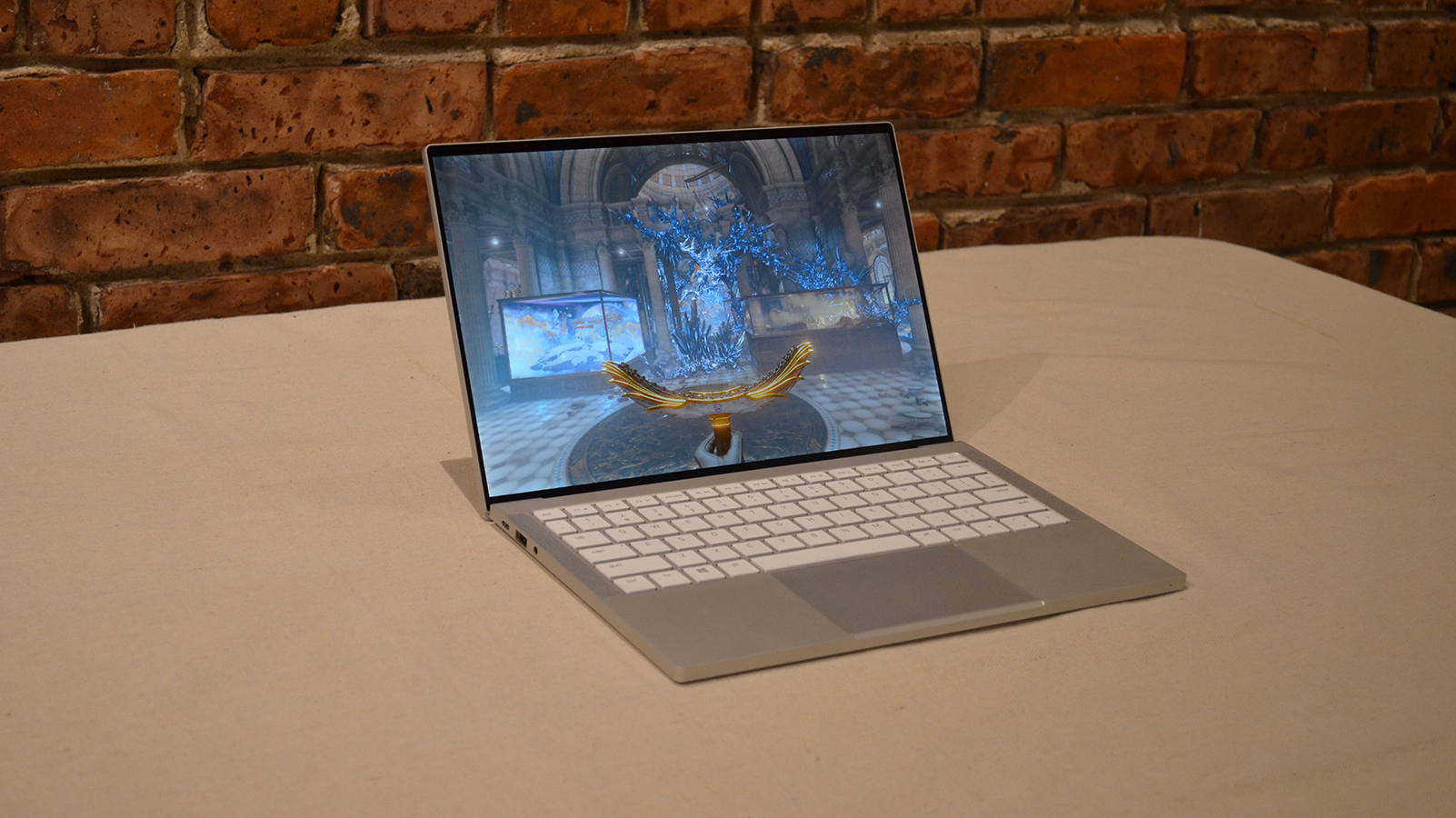TechRadar Verdict
The Razer Book 13 is Razer's first productivity laptop and given the company's reputation as one of the premier gaming system and peripheral makers, their first Ultrabook for the office has no right being this good. From its excellent starting price, to its performance, to its incredible design and build quality, our only complaints are that its battery life falls just short of being the best-in-class and it can run a little hot, so we can't outright call it perfect.
Pros
- +
Gorgeous design
- +
Excellent performance
- +
Great sound
- +
Affordable entry price
Cons
- -
Maybe its battery life?
- -
Runs a bit hot
Why you can trust TechRadar
Two minute review
The Razer Book 13 is an Ultrabook that's easy to gush over. From it's design and high-quality aluminum build to its lightweight and portability, what's on the inside is just as impressive and makes it easily our favorite Ultrabook of the year, so far.
Starting at a very reasonable price, the Razer Book 13 is also surprisingly accessible. For a company whose name is synonymous with gamer swagger, the Book 13 approaches the productivity market with a respectable humility that belies the exceptional quality of its product. This is Razer's first laptop for the adulting world and it single-handedly proves that there is more to Razer than RGB backlighting and gamer gum.
Being an Ultrabook, it is important to not overstate its performance. It's not going to be able to go toe-to-toe with a high-end mobile workstation with a discrete RTX GPU, but for those of us who don't need to render a lush, 3D environment on the go, the Razer Book 13 is powerful enough to handle just about any real-world task your workplace can throw at it.
What's more, its portability and lightweight aluminum construction lets you carry it with you around the house, around the office, or down the block to the coffee shop. Battery life is excellent, even if it's not the best we've seen in an Ultrabook lately. It'll still be more than enough to last you a full workday, though, and it's pair of USB Type-C Thunderbolt 4 ports make charging on the go a breeze.
For active professionals looking for a new notebook to get them through their workday without chaining them to a desk or wall outlet - but who don't want to sacrifice style or performance - stop what you're doing and give the Razer Book 13 a good, long look.
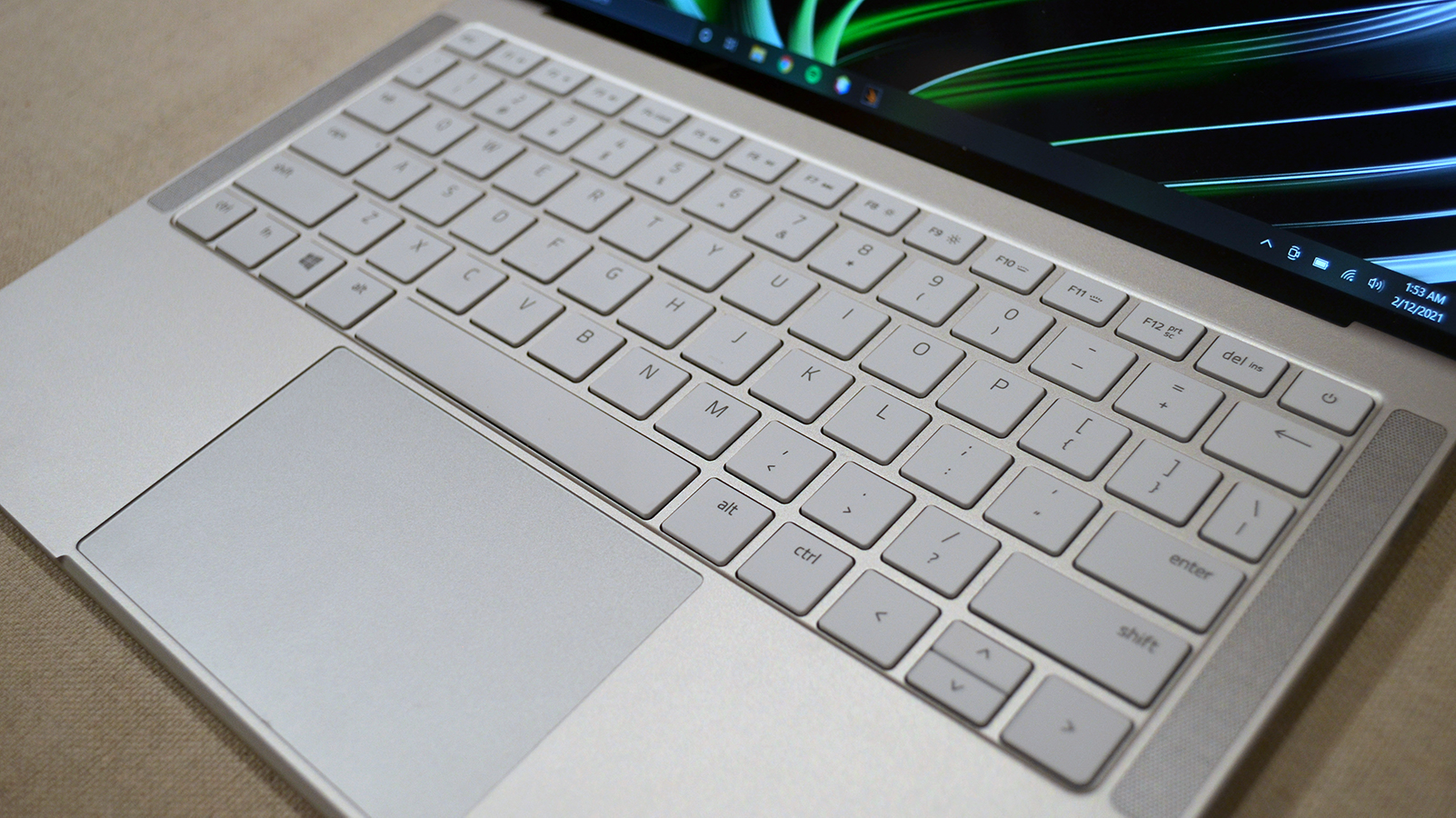
Here is the Razer Book 13 configuration sent to TechRadar for review:
CPU: Intel Core i7-1165G7
Graphics: Intel Iris Xe
RAM: 16GB
Screen: 13.4-inch FHD+ (1920x1200p) touch display
Storage: 256GB PCIe M.2 SSD
Ports: 2 x USB Type-C Thunderbolt 4, 1 x USB Type-A 3.2, 1 x HDMI 2.0, 1 x MicroSD slot, 1 x 3.5mm combo jack
Connectivity: Wi-Fi 6, Bluetooth 5.1
Camera: 720p IR webcam with Windows Hello
Weight: 3.09 pounds (1.4 kilos)
Size (W x D x H): 11.6 x 7.8 x 0.6 inches (295.6 x 198.5 x 15.15 millimeters)
Battery: 55WHr
Price and availability
The Razer Book 13 is available now, starting at $1,199/£1,199/AU$2,199 for the base model, which comes with an Intel Core i5-1135G7, FHD+ non-touch display, 8GB RAM, and a 256GB SSD.
The model reviewed here is the middle configuration, which retails for $1,599/£1,579/AU$2,999 and comes with an Intel Core i7-1165G7, FHD+ touch display, 16GB RAM, and a 256GB SSD.
The highest end configuration sells for $1,999/£1,999/AU$3,799 and features an Intel Core i7-1165G7, a 4k touch display, 16GB RAM, and a 512GB SSD.
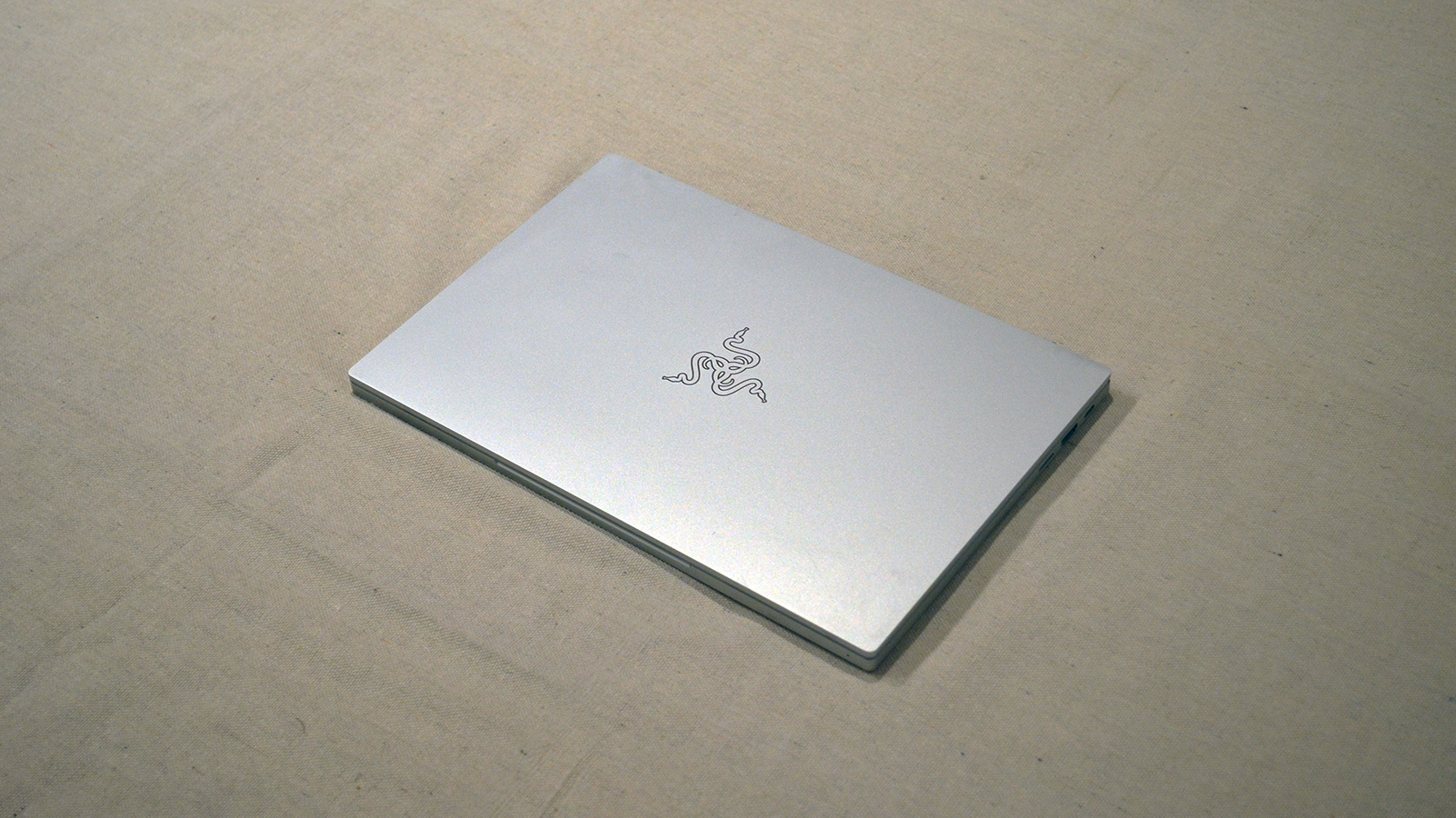
Design
The chassis of the Razer Book 13 is solid cut aluminum and comparisons to the Apple MacBook Air are inevitable. Honestly, the only thing that gives it away that this isn't a fancy new Apple product is the Razer logo on the lid.

The keyboard is the typical notebook layout without a tenkey, but if you're used to notebooks, that's not unusual and you probably don't miss it. The keys are well spaced and have per-key, soft white backlighting by default to make it easy to use late at night when you have it propped up on your lap in bed when you ought to be going to sleep.
There is also the option to add twinkly RGB lighting effects to the keyboard because it wouldn't be a Razer product without that, but they did have the good sense to make it something you have to turn on yourself - your boss is probably going to see you using this, after all.
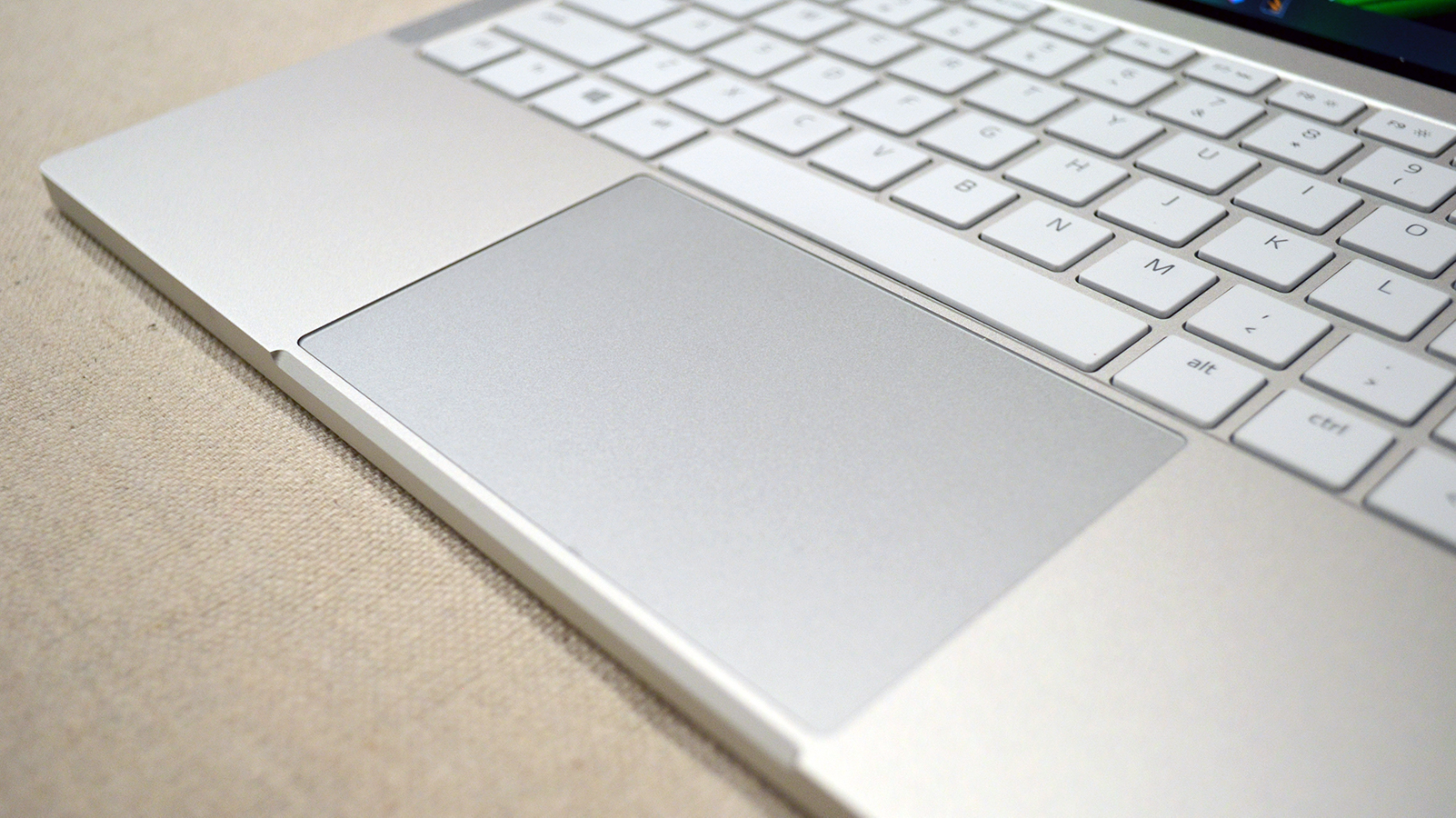
The multitouch trackpad is smooth and responsive, while the left and right buttons are both snappy and just stiff enough to give a satisfying click without feeling like you're bending back a piece of plastic.
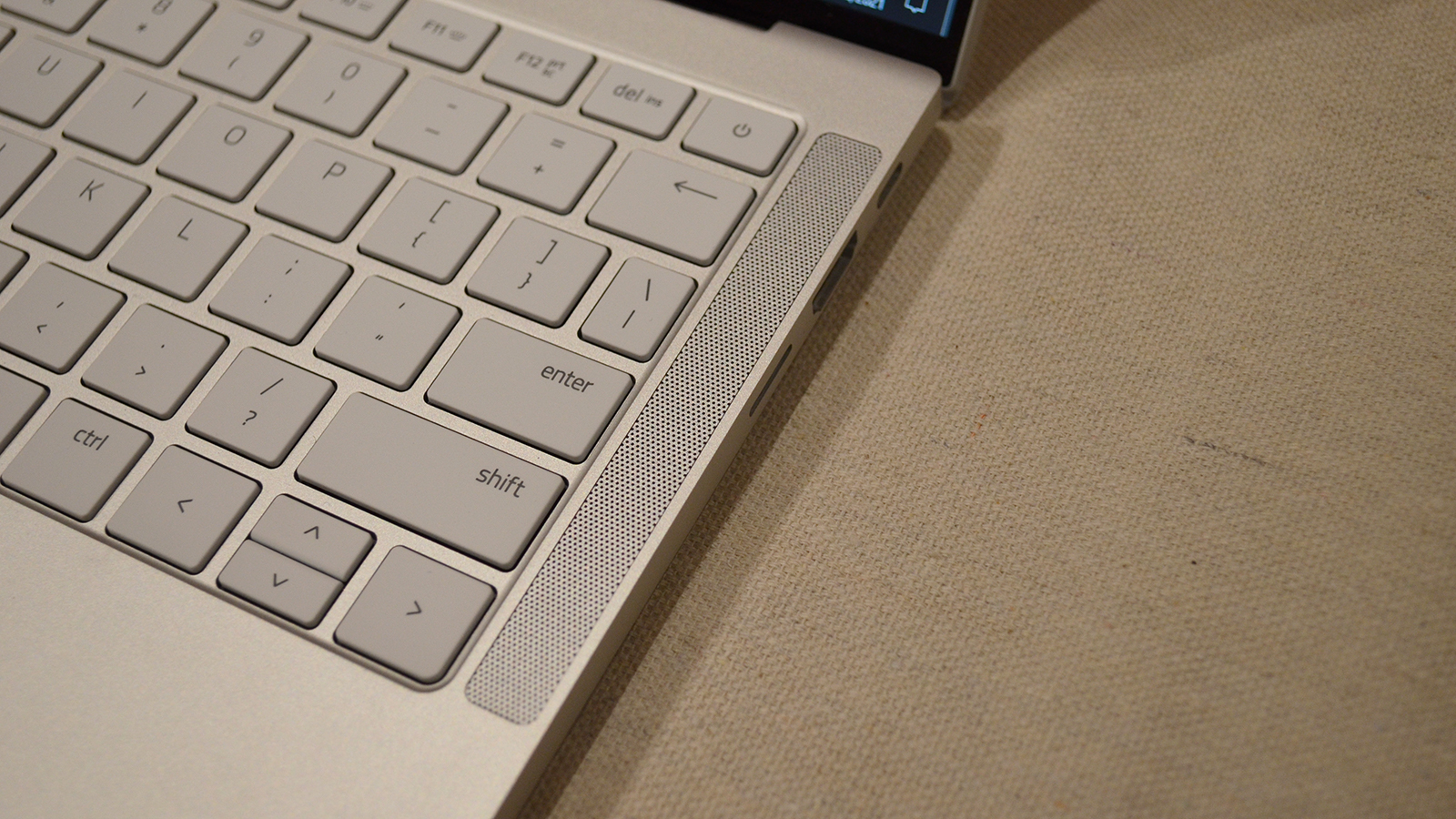
The top-firing speakers offer some of the best sound we've ever heard on a laptop. Cranked up to a reasonable 70% volume, we could easily hear our Billy Strings playlist from two rooms over, so the Book 13 will definitely help you get your chores done around the house.

Ultrabooks are usually light on ports, but the Book 13 gives you two USB Type-C Thunderbolt 4 ports - both of which can charge your battery - a USB Type-A 3.2 port, an HDMI 2.0 port, MicroSD slot, and a 3.5mm combo jack. It also has Bluetooth 5.1 connectivity and Wi-Fi 6, though it doesn't have a wired ethernet connection but you never see those on Ultrabooks anyway, so that's to be expected.
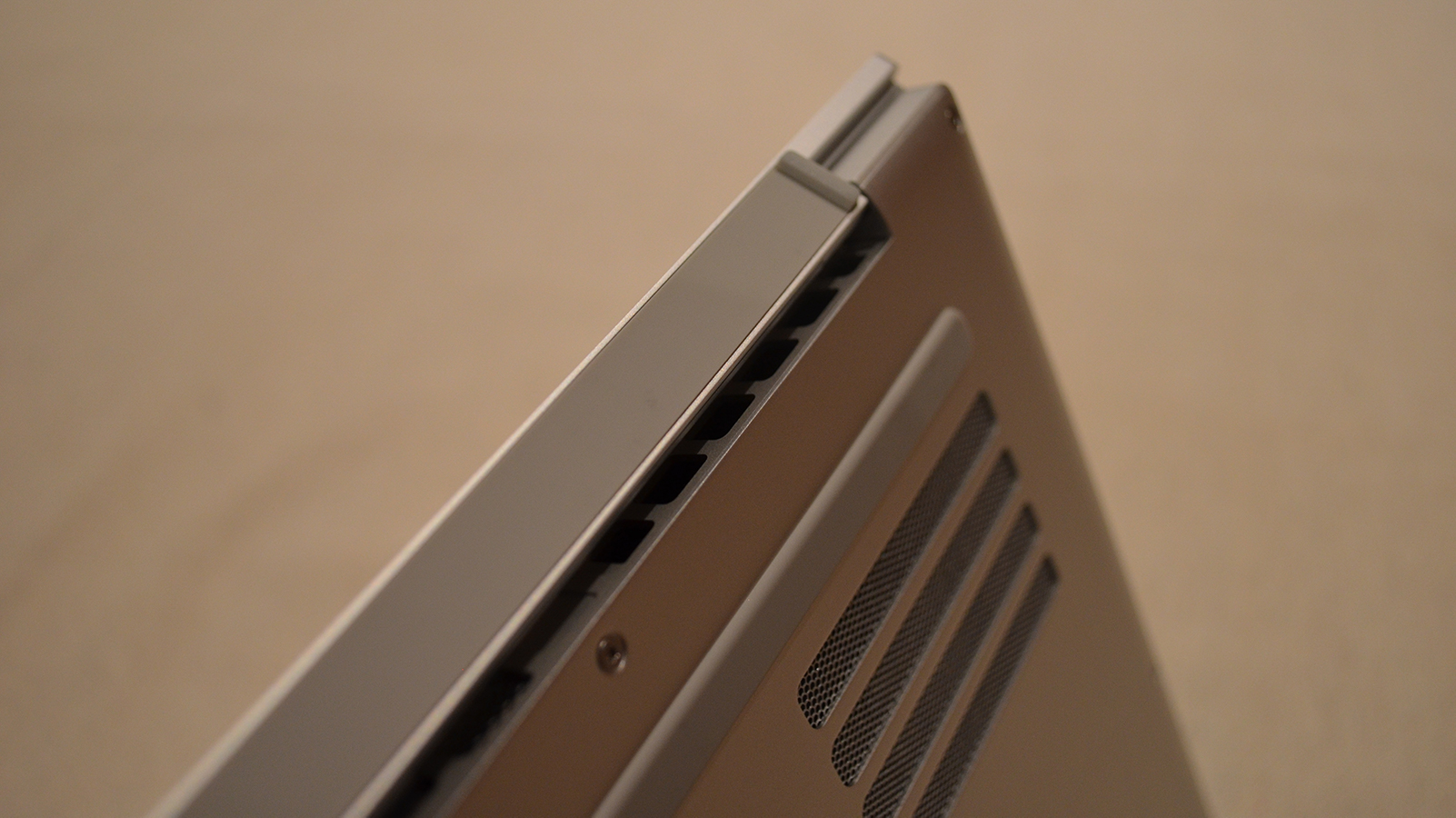
Airflow is decent enough, though it can get noticeably warm under strain. The main vent in hidden behind the lid hinge and the twin fans on the underside are aided by Razer's vapor cooling system. Given the compact form factor it is working with and the 11th-generation Intel processor under the hood, the Book 13 does an admirable job managing heat, but it's not perfect.
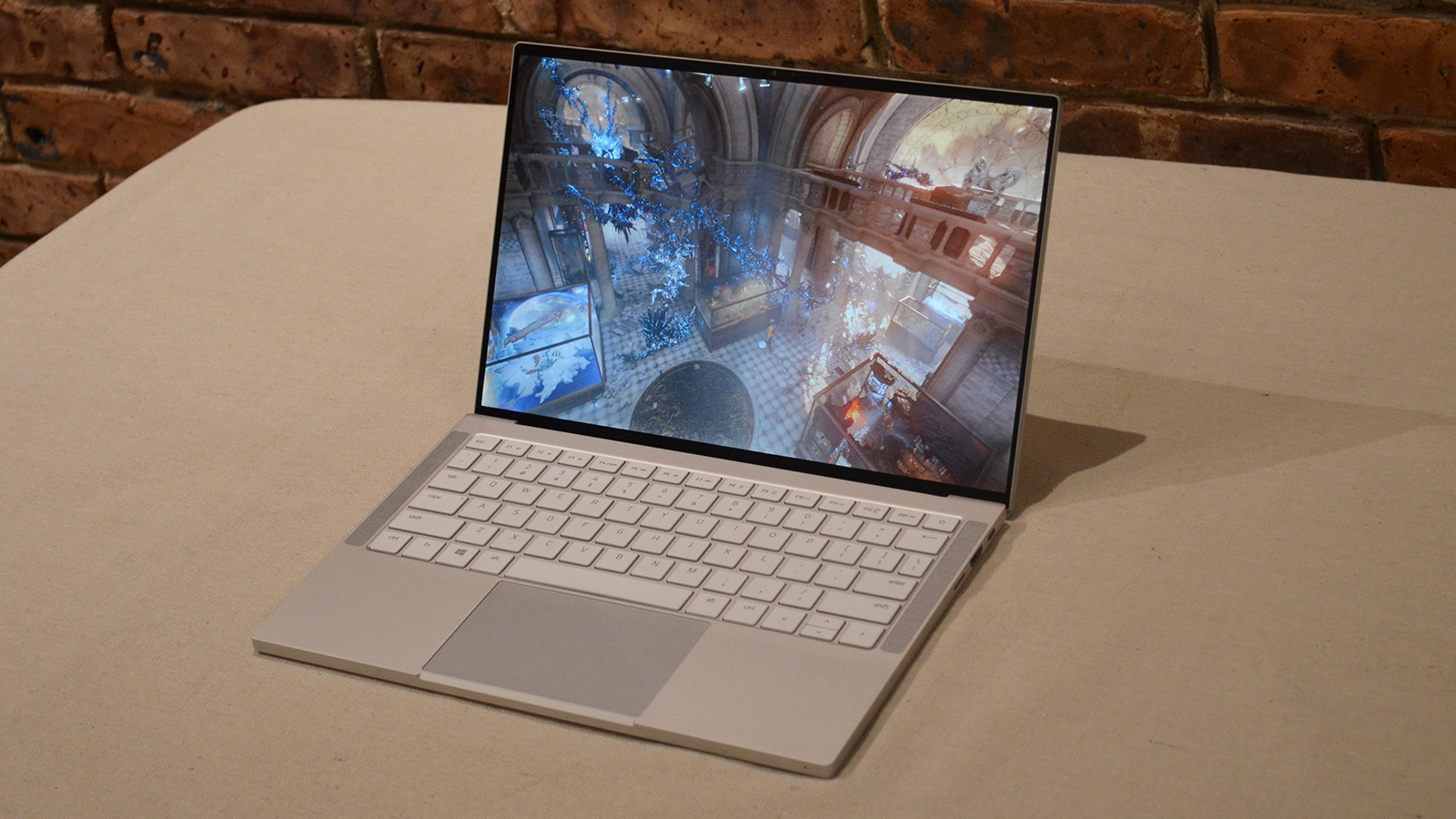
Here is how the Razer Book 13 performed in our suite of benchmark tests:
3DMark Night Raid: 16,439; Firestrike: 5,083; Time Spy: 1,771
Blender BMW27: 551 seconds; Barcelona Pavilion: 120 seconds
GeekBench 5: 1,558 (single-core); 5,397 (multi-core) CineBench20 (Single core): 572cb; (Multi core): 1,845cb
PCMark10 Home: 4,871
Battery Life (PCMark10 test): 11 hours 42 minutes
Battery Life (TechRadar movie test): 9 hours 20 minutes
Performance
When it comes to performance, the Razer Book 13 surprised us in a few ways. It has essentially the same hardware as the Dell XPS 13, but manages to get more out of it for the most part.
The Intel Evo i7-1165G7 processor in both machines essentially scored the same on Geekbench 5 and PCMark10 Home, but the Book 13 outperformed the XPS 13 in our CinebenchR20 test, 1,845cb to 1,735cb.
The Book 13 absolutely walks away with it in our 3DMark Firestrike benchmark, 5,083 to 4,173 and also manages to do noticeably better in our Time Spy test, 1,771 to 1,523 - though neither of those scores are terribly impressive.
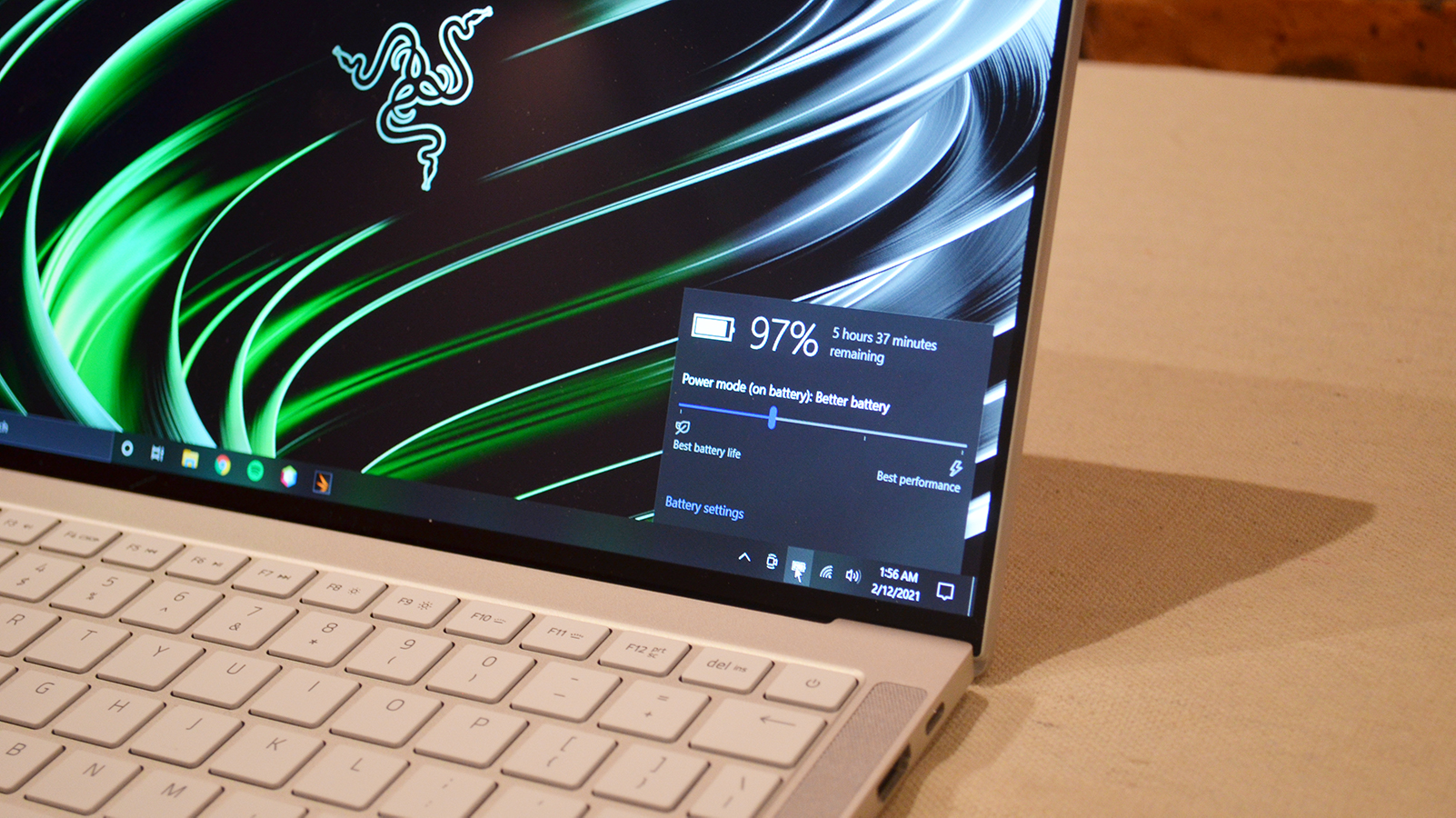
In our PCMark10 battery life test, the Razer Book 13 lasts 11 hours and 42 minutes, while the XPS 13 managed to eek out an extra five minutes on the same test. In our movie test, however, the Book 13 slips a bit against the XPS 13, lasting nine hours and 20 minutes compared to the XPS 13's 11 hours and one minute.
So while the Book 13's battery life isn't completely blown out here, the XPS 13 has a slightly smaller 52WHr battery next to the Book 13's 55WHr one, so it probably should have done better. It looks like the better graphics performance of the Razer Book 13 comes at a slightly greater cost to battery life.
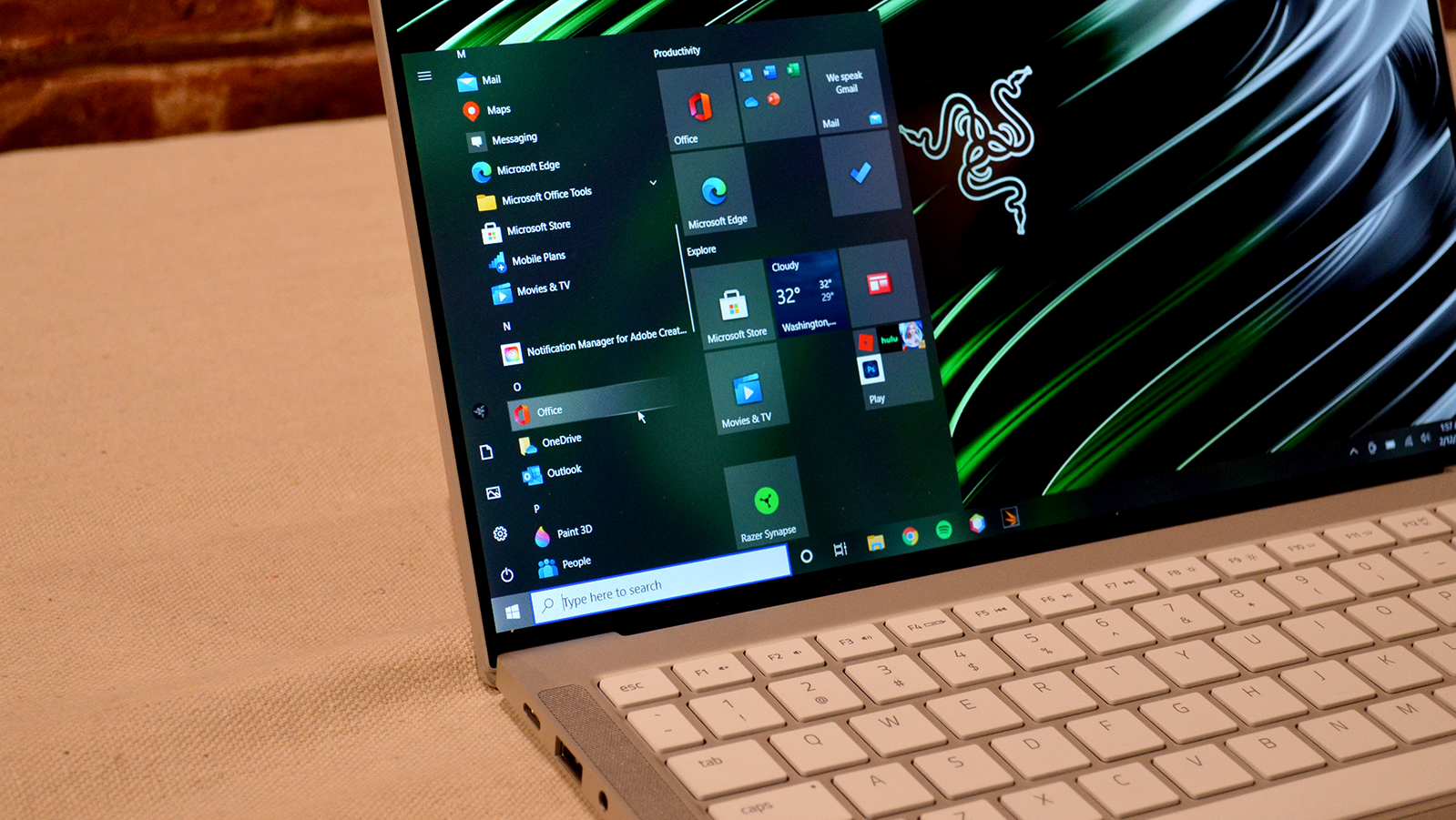
Software and features
Given that it's a premium Ultrabook, the Razer Book 13 is thankfully light on bloatware. It is a Razer product, though, so it comes with Razer Synapse where you can control the color of the keyboard's backlighting and add some effects to it if you absolutely must.
The other major feature of the Synapse software is you can adjust the system performance to Battery Saver, Balanced, or Performance modes and control the fan levels to your liking. There are some other smaller tweaks you can make through the Synapse software as well that make it a pretty useful apps to have around if you want to really dig into it.
Buy it if...
You want a gorgeous Ultrabook
When it comes to premium Ultrabooks, the Razer Book 13 is a surprisingly mature and elegant design that rivals anything Apple is putting out right now.
You want excellent performance out of your Ultrabook
This is one of the best performing Ultrabooks you're going to find on the market right now.
You don't want to sacrifice style because of your budget
For an Ultrabook this pretty, the entry-level model is surprisingly affordable.
Don't buy it if...
You want a high-performance machine
For an Ultrabook, the Razer Book 13 has great performance, but for a productivity machine, there are more powerful laptops out there if you're willing to sacrifice portability.
You want a gaming laptop
Despite the name, the Razer Book 13 is not really built for gaming. It could do some light gaming for sure, but anything like a modern AAA title is going to struggle on this machine.

John (He/Him) is the Components Editor here at TechRadar and he is also a programmer, gamer, activist, and Brooklyn College alum currently living in Brooklyn, NY.
Named by the CTA as a CES 2020 Media Trailblazer for his science and technology reporting, John specializes in all areas of computer science, including industry news, hardware reviews, PC gaming, as well as general science writing and the social impact of the tech industry.
You can find him online on Bluesky @johnloeffler.bsky.social
